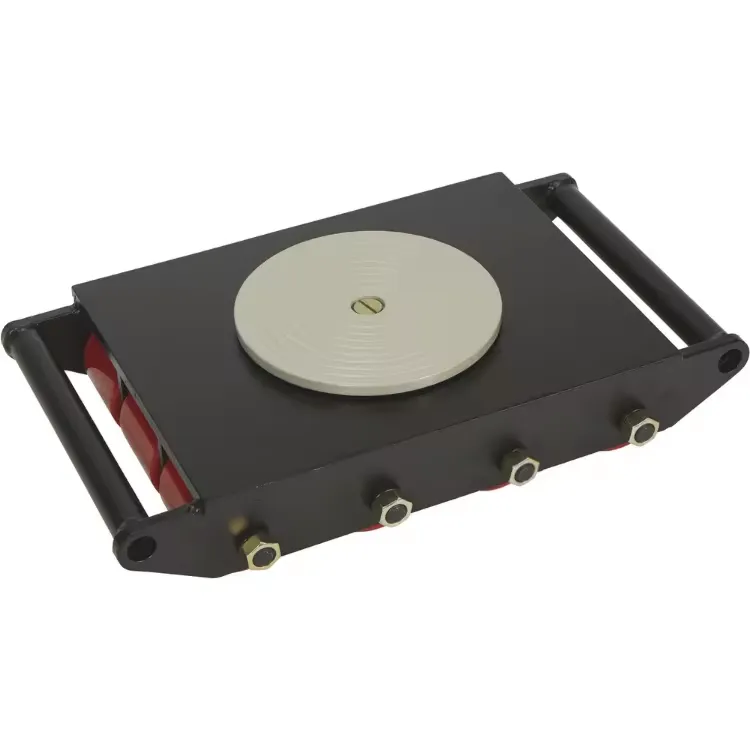light gantry crane
The Light Gantry Crane A Game-Changer in Material Handling
In today's fast-paced industrial landscape, the demand for efficient, safe, and versatile material handling solutions has never been higher. Among the various types of lifting mechanisms available, the light gantry crane has emerged as a game-changer, offering a blend of quality, mobility, and cost-effectiveness. This article explores the advantages, applications, and features of light gantry cranes, highlighting their significance in various sectors.
Understanding the Light Gantry Crane
A light gantry crane is a portable lifting device that consists of a horizontal beam supported by vertical legs. The structure allows for the movement of loads within a defined space, making it easier to lift, lower, and transport materials. These cranes are designed for lighter loads, typically ranging from a few hundred kilograms to around five tons, making them suitable for a wide array of applications.
Unlike traditional overhead cranes, light gantry cranes offer greater flexibility. They can be assembled and disassembled with relative ease, allowing for quick setup and relocation. The mobility of these cranes makes them ideal for workshops, warehouses, and construction sites where space and load requirements can vary dramatically.
Advantages of Light Gantry Cranes
1. Cost-Effectiveness Light gantry cranes are often more affordable than heavy-duty models, making them accessible for small to medium-sized enterprises (SMEs) that require reliable lifting equipment without breaking the bank.
2. Mobility and Versatility Many light gantry cranes feature wheels or casters, allowing for easy movement across different areas of a worksite. This mobility enhances workflow and productivity, as operators can quickly reposition the crane to meet their lifting needs.
3. Ease of Use With simple controls and minimal training required, light gantry cranes are user-friendly, enabling operators to perform lifting tasks efficiently and safely. Their straightforward design reduces the learning curve, which is especially beneficial for businesses with high turnover rates.
4. Compact Design These cranes are typically designed to occupy less space than their larger counterparts. This translates to optimal use of available space, which is crucial in environments where every square foot matters.
5. Safety Features Modern light gantry cranes come equipped with safety features such as overload protection, emergency stop buttons, and locking systems to prevent accidental movement. These features promote a safer working environment, minimizing the risk of accidents and injuries.
Applications of Light Gantry Cranes
Light gantry cranes are extensively used across various industries, including
light gantry crane

- Manufacturing In factories, these cranes assist in moving components and finished products along assembly lines, significantly improving operational efficiency.
- Construction Construction sites benefit from light gantry cranes to lift materials, tools, and equipment, particularly in areas where traditional cranes cannot operate due to space constraints.
- Maintenance and Repair In automotive and aerospace sectors, these cranes are instrumental in lifting engines, heavy parts, and equipment for maintenance and repair work.
- Research and Development Laboratories and research facilities often use light gantry cranes for handling sensitive instrumentation and materials that require careful placement.
Key Considerations When Choosing a Light Gantry Crane
When selecting a light gantry crane, several factors should be taken into account
1. Load Capacity Determine the maximum weight you will need to lift. Ensure the crane's specifications exceed this requirement to maintain safety and efficiency.
2. Span Consider the span of the crane, which is the distance between the legs. This will affect the working area you can cover while lifting and moving materials.
3. Height Evaluate the height of the lifting mechanism. It should meet your specific needs, particularly if you are dealing with taller loads or need to place items on elevated surfaces.
4. Portability If mobility is essential, look for models with wheels or casters that allow for easy movement.
5. Durability Choose a crane made from high-quality materials to ensure it can withstand the rigors of daily use.
Conclusion
The light gantry crane represents an innovative solution for material handling that combines economy, efficiency, and versatility. As industries continue to evolve, the role of such cranes will only grow in importance, enabling businesses to meet their lifting needs effectively. By investing in a light gantry crane, companies can enhance productivity, ensure safety, and maintain a competitive edge in their respective markets.
-
Portable 2000 lb Gantry Crane | Heavy-Duty & AdjustableNewsAug.30,2025
-
Versatile Lifting Solutions with Gantry and Overhead CranesNewsAug.29,2025
-
The Versatile Mobile Gantry Crane SolutionNewsAug.29,2025
-
Reliable Movement with Heavy Machinery Skates and RollersNewsAug.29,2025
-
Reliable Lifting Performance with 2000 lb Gantry Crane and 2 Ton Overhead SystemsNewsAug.29,2025
-
Maximize Lifting Efficiency with PML Magnetic LiftersNewsAug.29,2025
-
Efficient Relocation Starts with Reliable Machinery MoversNewsAug.29,2025
